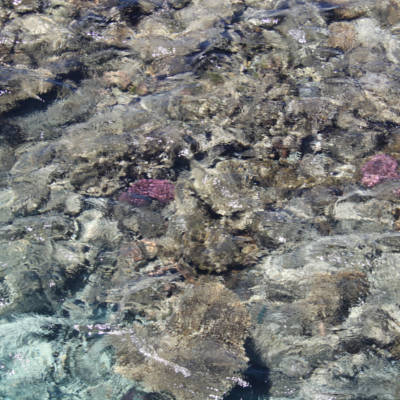Using AI to control energy for indoor agriculture
30 September 2024
Published online 25 March 2015
Red sea coral reefs may be more tolerant to heat than other coral reefs around the world, but climate change may be straining their tolerance to its limit.

© Mohammed Yahia
In an interdisciplinary marine research collaboration between the German GEOMAR institute, King Abdullah University of Science and Technology (KAUST) and King Abdulaziz University in Saudi Arabia, scientists measured the calcification and photosynthetic rates of the coral Pocillopora verrucosa at sites from the north to the south of the Red Sea, spanning a distance of 2,000 km, with temperature variations throughout the year of more than 6°C. They also collected DNA from these corals to evaluate their genetic diversity1.
Corals from the different sites were genetically similar and showed a strongly consistent relationship between calcification and temperature, indicating that a homogeneous P. verrucosa population spans the Red Sea, rather than several sub-populations adapted to their local conditions.
The study showed that corals in the south of the Red Sea, where temperatures are higher, are at the edge of their tolerance. The findings are an alarm call for the impact of global warming on these corals, according to Maren Ziegler, a researcher at KAUST who was not involved in the study.
Yvonne Sawall, the lead author of the study said that given the steep temperature gradient and the large distances involved, she expected to find local adaptation, with genetic divergence and site-specific calcification dependent on temperature, rather than such a homogeneous picture. Sawall, however, cautions that the team only examined variation at neutral genetic loci, and further studies may uncover variation at other loci.
The team did find some variation in the symbiotic algae associated with the corals in the northernmost and southernmost samples. “Maybe the new algae species we discovered in the south is particularly thermo-tolerant,” said Sawall.
Indentifying a difference associated with temperature tolerance would encourage researchers who are concerned about the impact of global warming on corals and the ecosystems they support. Sawall’s team is also planning a follow-up study to look for signs of local adaptation in another coral species is not as well dispersed as P. verrucosa.
The study was unprecedented not only in its scale, spanning two seasons across a large area, but also in combining population genetics, physiological data, and molecular identification of the algal symbionts. “Their approach generated some important insights and provides another perspective,” says Ziegler.
doi:10.1038/nmiddleeast.2015.57
Stay connected: